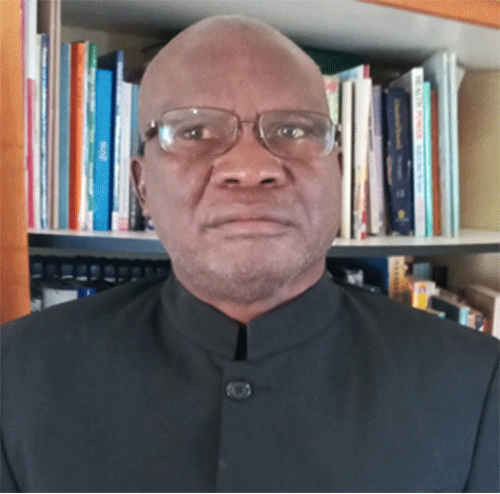After independence, many African scholars of history faced a daunting and enormous task of rewriting the continent’s correct history, as it has been marred and distorted by colonialism due to lack of documentation.
Hotep (2003) says Europeans practised and perfected territorial, intellectual and mental colonialism to conquer and colonise the land, knowledge and minds of the indigenous peoples of Africa to disconnect Africans from their heritage and culture.
In the case of the Zambezi region, its history is shrouded in political and tribal confrontational and argumentative discourses. The case of the Zambezi possesses more challenges, as the region is volatile.
Archaeological evidence and early arrivals
There is scanty research carried out to establish the archaeological status and the early inhabitants of the region. Notwithstanding the claims and pronouncements, historical sources indicate the early inhabitants of the Zambezi region, like in many parts of Southern Africa, were the San.
However, to presuppose that by 500 BC there were Subiyas in the region in their current status is an overstatement.
Whereas there were Black people during the early biblical times, Kruger (1984) mentions that during Sundano’s rule, Subiyas were known as Batwa. The Luyanas equally acquired their name three centuries ago after settling in the Kola district of the DRC along the Lui River.
Name terms of the region
There have been many terms referring to the region known as Zambezi today.
It was initially called Divanga before the Luyana kingdom, then Linyanti during the first Luyana Kingdom.
It came to be known as Kololo Country when the Kololos from South Africa conquered the Luyanas during the Difaqane in the 1830s.
The region resorted to the Luyana or Lozi Country after the defeat of the Kololos in 1864.
After the Anglo-Germany Treaty or Heligoland Treaty of 1890, Zambezi became known as “Germany Barotseland”, “Germany Zambezi Region”, “Germany Bechuanaland” or just “Caprivi Zipfel”.
Because of its shape and geography of being a long and narrow stretch of country, the Region was commonly called the Caprivi Strip or Caprivi’s Finger.
Two years after Namibian independence in 1992, it was named Caprivi Region and later Zambezi region in 2014. One wonders why the region has been tossed around and given different names at certain periods.
Oral traditions perspective
Njoroge and Bennaars (1986) caution that the spoken word is always difficult to capture and assess and becomes more incomprehensible if it was spoken in the distant past. Because much of accounts of lived experience in Africa were not recorded, many researchers rely on oral tradition.
This is the challenge faced by many historians in the Zambezi region emanating from the fact that their ancestors’ work and traditions were not recorded. Another contributing factor to this complicated situation is the lack of objectivity among the residents and scholars in the region.
However, Alagoa (2005) maintains that oral tradition is a viable source and a history in its own right; and recognises the fact that the custodians of the traditions are both informants and historians.
Eurocentric perspective
Very scanty information is available, which was carried out by early explorers like David Livingstone and Jalla’s account of the history of the Lozis in his book, Litaba za Sicaba sa Malozi (History of the Lozi Nation). This version is equally controversial as it is Eurocentric and could be a third-party version of the original invents in the region.
Still, there were issues Jalla could not understand and cover at that time because of the infrastructure. Because of his Christian orientation and principles, Jalla tends to doubt the validity and accuracy of some mythology portrayed by the Lozis as authentic.
This is quite strange as he deliberately ignores the mythologies of his European ancestors, like those of the Greeks, Jews and Romans. There are currently three groups of people in the region who are striving for a different status.
The traditionalists
These are elderly people from different ethnic groups who still maintain that the region has been part of the Luyana kingdom and should remain like that.
The Caprivi group
These are the first nationalists who left the region after the formation of the Caprivi African National Union (CANU) and sought support for the liberation struggle. This group strongly believes that the region should be an independent state on its own and harbours intellectuals of note who are hibernating behind this concept for their bellies.
The secessionist group
This group maintains that the region should be seceded from Namibia and become an independent state. On 2 August 1999, a secessionist attack was launched in Katima Mulilo at the Police Station, NBC building and Mpacha Airport, which culminated in the arbitrary arrest of many Mafwes. Despite the flight of its leaders into exile and the repatriation of some members from Dukwe Refugee Camp in Botswana, the group seems to be operating underground.
Zambezia claim
The debate concerning the Zambezi region has made another drastic turn when literature dug has shown that there was indeed a country known as Zambesia and the group wants nothing from the country. What is most compelling is David Livingstone’s utterance, ‘I was then entirely dependent on my 27 men, whom I might name Zambesians, for there were two Makololo only, while the rest consisted of Barotse, Batoka, Bashubia and two of the Ambonda’ (Livingstone, 1857).
The advantage is that these four groups hardly see eye to eye to reach one common goal.


